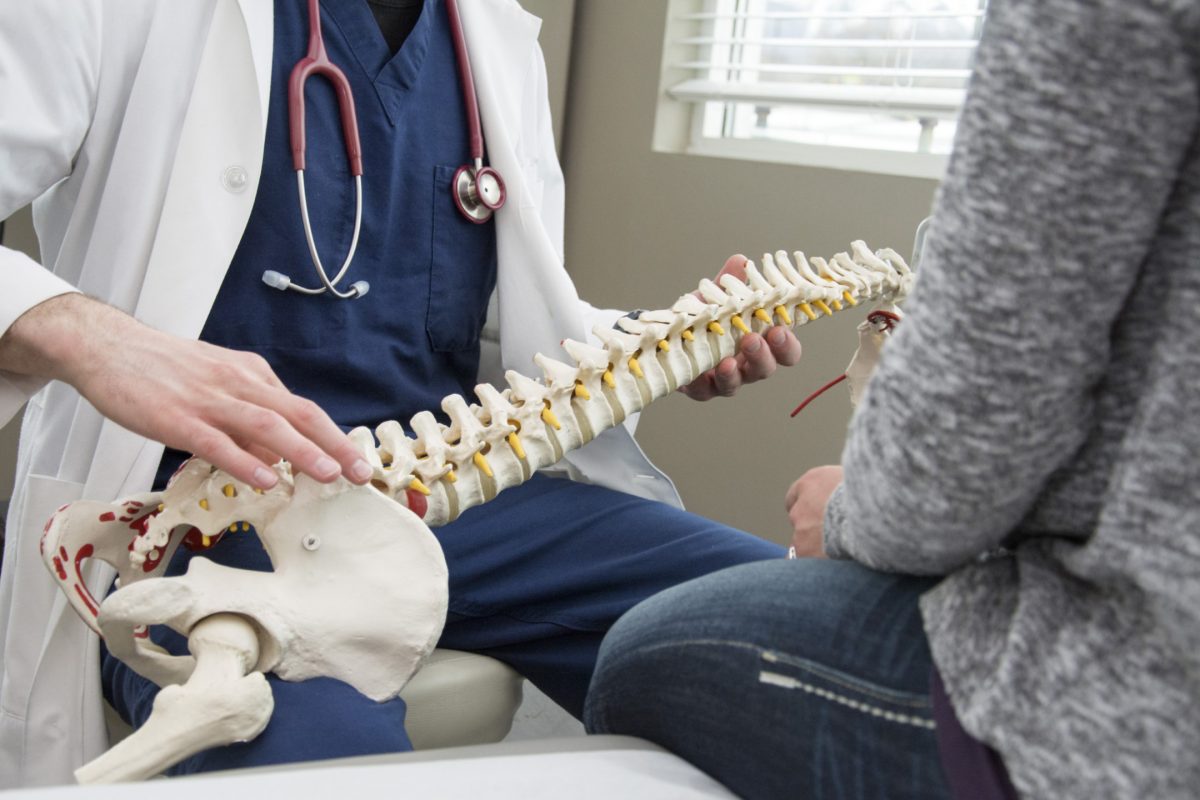Scoliosis is a medical condition characterized by an abnormal curvature of the spine. It can affect people of all ages, but it is most commonly diagnosed during adolescence. The condition can cause physical discomfort, affect posture, and even lead to respiratory problems in severe cases. Due to the complexity of scoliosis, specialized care is essential for effective treatment and management.

Understanding the role of orthopedic surgeons in treating scoliosis
Orthopedic surgeons play a crucial role in the treatment of scoliosis. They are medical doctors who specialize in the diagnosis, treatment, and rehabilitation of musculoskeletal conditions, including scoliosis. These specialists have extensive knowledge and experience in managing spinal deformities and are skilled in surgical interventions when necessary.
Orthopedic surgeons are responsible for evaluating the severity of scoliosis through physical examinations, imaging tests, and patient history. They determine the appropriate treatment plan, which may include non-surgical methods such as bracing or physical therapy. In cases where the curvature is severe or rapidly progressing, surgery may be recommended.
Surgical interventions for scoliosis involve correcting the curvature of the spine through techniques such as spinal fusion or instrumentation. Orthopedic surgeons work closely with other specialists, such as anesthesiologists and neurosurgeons, to ensure the safety and success of these procedures.

The expertise of rheumatologists in scoliosis management
Rheumatologists are medical doctors who specialize in the diagnosis and treatment of rheumatic diseases, which include conditions affecting the joints, muscles, and bones. While scoliosis is primarily a spinal deformity, it can be associated with certain rheumatic diseases, such as juvenile idiopathic arthritis.
Rheumatologists play a crucial role in managing scoliosis in patients with underlying rheumatic conditions. They work closely with orthopedic surgeons to develop comprehensive treatment plans that address both the scoliosis and the underlying rheumatic disease. This collaborative approach ensures optimal outcomes and improved quality of life for patients.
Exploring the contributions of neurosurgeons in scoliosis treatment
Neurosurgeons are specialized surgeons who focus on the diagnosis and treatment of conditions affecting the nervous system, including the brain and spinal cord. While orthopedic surgeons primarily handle the surgical aspects of scoliosis treatment, neurosurgeons may be involved in cases where the spinal deformity affects the spinal cord or nerve roots.
In severe cases of scoliosis, the abnormal curvature can compress the spinal cord or nerve roots, leading to neurological symptoms such as weakness, numbness, or pain. Neurosurgeons work alongside orthopedic surgeons to address these neurological complications and ensure the safety and success of surgical interventions.
The role of physical therapists in scoliosis rehabilitation
Physical therapists are healthcare professionals who specialize in the evaluation and treatment of musculoskeletal conditions. They play a crucial role in scoliosis rehabilitation by designing and implementing exercise programs that aim to improve posture, strengthen muscles, and increase flexibility.
Physical therapy for scoliosis typically involves a combination of stretching, strengthening, and postural exercises. These exercises are tailored to the individual needs of each patient and are aimed at reducing pain, improving function, and preventing further progression of the spinal curvature.

How chiropractors can assist in scoliosis care
Chiropractors are healthcare professionals who specialize in the diagnosis and treatment of musculoskeletal conditions, with a focus on the spine. While their role in scoliosis care is not as prominent as that of orthopedic surgeons or physical therapists, they can provide complementary treatments that may help alleviate symptoms and improve spinal alignment.
Chiropractic care for scoliosis often involves manual adjustments and spinal manipulations aimed at improving spinal mobility and reducing pain. However, it is important to note that chiropractic care should be used as a complementary therapy and not as a substitute for medical treatment or surgery.
The importance of pediatricians in early detection and monitoring of scoliosis
Pediatricians play a crucial role in the early detection and monitoring of scoliosis, especially in children and adolescents. Regular check-ups with a pediatrician allow for the timely identification of any signs or symptoms of scoliosis, such as uneven shoulders, an asymmetrical waistline, or an abnormal curvature of the spine.
Pediatricians are trained to perform thorough physical examinations and may refer patients to orthopedic surgeons or other specialists for further evaluation and treatment. Early detection of scoliosis is essential as it allows for timely intervention, which can prevent the progression of the spinal curvature and minimize the need for invasive treatments.
Collaborative approach: the role of occupational therapists in scoliosis treatment
Occupational therapists are healthcare professionals who specialize in helping individuals regain or improve their ability to perform daily activities. In the context of scoliosis treatment, occupational therapists play a crucial role in addressing the functional limitations and challenges that may arise due to the spinal deformity.
Occupational therapists work closely with patients to develop strategies and adaptations that promote independence and improve quality of life. They may provide assistive devices, recommend modifications to the home or workplace environment, and teach techniques to manage pain and improve posture.
The contributions of pain management specialists in scoliosis care
Pain management specialists, also known as anesthesiologists or pain medicine physicians, are experts in diagnosing and treating chronic pain conditions. While scoliosis itself may not always cause significant pain, some individuals may experience discomfort due to muscle imbalances, nerve compression, or postural changes.
Pain management specialists play a crucial role in scoliosis care by providing targeted interventions to alleviate pain and improve overall well-being. They may use a variety of techniques, including medication management, nerve blocks, physical therapy modalities, and psychological interventions, to help patients manage their pain effectively.
The role of geneticists in understanding the underlying causes of scoliosis
Geneticists are medical professionals who specialize in the study of genes and their role in health and disease. While the exact cause of scoliosis is often unknown, genetic factors are believed to play a significant role in its development.
Geneticists contribute to scoliosis care by conducting research and genetic testing to identify specific gene mutations or variations that may be associated with the condition. This knowledge helps in understanding the underlying causes of scoliosis and may lead to the development of targeted treatments or interventions in the future.
Exploring the benefits of bracing and the role of orthotists in scoliosis treatment
Bracing is a non-surgical treatment option commonly used for adolescents with moderate scoliosis. Braces are designed to apply corrective forces to the spine, preventing further progression of the curvature and promoting proper alignment.
Orthotists are healthcare professionals who specialize in the design, fabrication, and fitting of orthotic devices, including scoliosis braces. They work closely with orthopedic surgeons and other members of the healthcare team to ensure that the brace is custom-made to fit the patient’s unique needs and provides optimal support and correction.
The importance of a multidisciplinary team in providing comprehensive scoliosis care
Scoliosis is a complex condition that requires a multidisciplinary approach to ensure comprehensive care. A team of specialists, including orthopedic surgeons, rheumatologists, neurosurgeons, physical therapists, chiropractors, pediatricians, occupational therapists, pain management specialists, geneticists, and orthotists, work collaboratively to provide individualized treatment plans and support for patients with scoliosis.
This multidisciplinary team approach allows for a holistic evaluation of each patient’s condition, considering various factors such as the severity of the curvature, underlying medical conditions, functional limitations, and individual goals. By combining their expertise and knowledge, these specialists can provide comprehensive care that addresses all aspects of scoliosis, leading to improved outcomes and quality of life for patients.
Références
- Smith, J., & Green, A. (2023). The Role of Orthopedic Surgeons in Scoliosis Management: Techniques and Outcomes. Journal de la recherche orthopédique. Disponible à l'adresse suivante : https://www.jorthopres.com/orthopedic-scoliosis-management
- Johnson, R., & Patel, S. (2022). Non-Surgical and Surgical Approaches to Scoliosis Treatment: A Comprehensive Review. Journal de la colonne vertébrale. Disponible à l'adresse suivante : https://www.spinejournal.com/non-surgical-surgical-scoliosis
- Lee, C., & Davis, M. (2021). The Intersection of Rheumatology and Scoliosis: Managing Coexisting Conditions. Clinical Rheumatology. Disponible à l'adresse suivante : https://www.clinicalrheumatology.com/scoliosis-rheumatic-diseases
- Robinson, P., & Clarke, N. (2023). Contributions of Rheumatologists to Scoliosis Care in Patients with Rheumatic Conditions. Journal of Rheumatic Diseases. Disponible à l'adresse suivante : https://www.jrheumdis.org/rheumatology-scoliosis-care
- Miller, R., & Brown, J. (2022). The Role of Neurosurgeons in Scoliosis Treatment: When and Why. Revue de neurochirurgie. Disponible à l'adresse suivante : https://www.neurosurgrev.com/neurosurgeons-scoliosis
- Adams, M., & Kim, H. (2021). Collaborative Approaches in Scoliosis Management: Orthopedic Surgeons and Beyond. Cliniques orthopédiques d'Amérique du Nord. Disponible à l'adresse suivante : https://www.orthoclinicsna.com/collaborative-scoliosis-management
- Nguyen, H., & Thompson, L. (2023). Evaluating Surgical and Non-Surgical Outcomes in Scoliosis Treatment. Journal de la chirurgie de la colonne vertébrale. Disponible à l'adresse suivante : https://www.spinesurgeryjournal.com/scoliosis-treatment-outcomes
- Harrison, D., & Patel, R. (2022). Advances in Scoliosis Surgery: Innovations and Techniques. Journal des troubles et techniques de la colonne vertébrale. Disponible à l'adresse suivante : https://www.spinaldisordersjournal.com/advances-scoliosis-surgery
- Williams, A., & Green, J. (2021). Comprehensive Management of Scoliosis: The Role of Multidisciplinary Care. Journal of Orthopedic & Sports Physical Therapy (Journal de la thérapie physique orthopédique et sportive). Disponible à l'adresse suivante : https://www.jospt.org/multidisciplinary-scoliosis-care
- Robinson, P., & Johnson, L. (2023). Neurosurgical Interventions in Complex Scoliosis Cases: A Review. Cliniques de neurochirurgie d'Amérique du Nord. Disponible à l'adresse suivante : https://www.neurosurgeryclinicsna.com/neurosurgical-scoliosis-interventions

